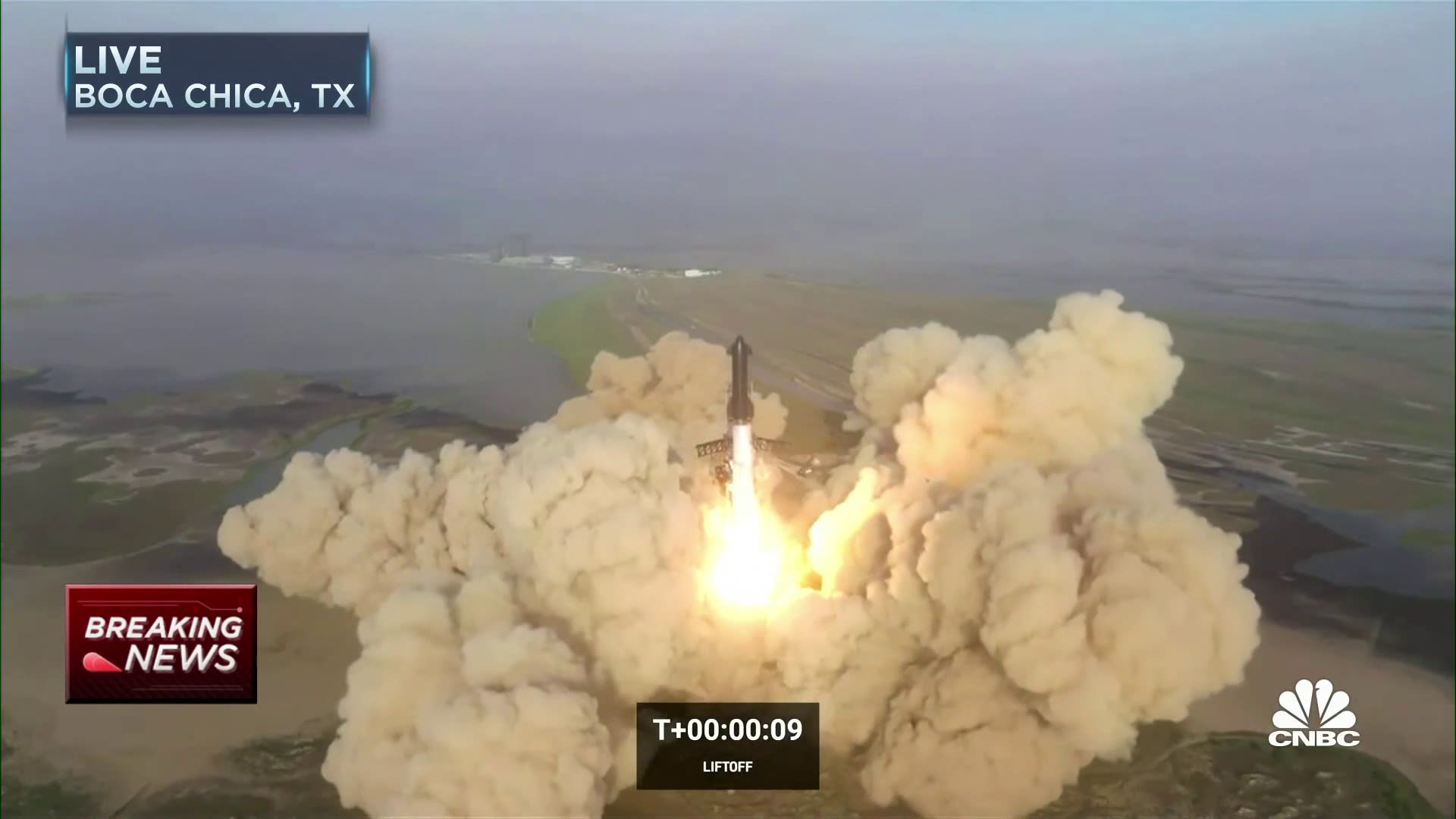
SOUTH PADRE ISLAND, Texas — Elon Musk’s SpaceX on Thursday launched its Starship rocket for the first time, but fell short of reaching space after exploding in mid-flight. No crew were on board.
It’s the culmination of years of regulatory work and technological tests for SpaceX and the largest and most powerful rocket ever built.
The company made a first go at getting this launch off the ground on Monday, but a pressure valve in the Super Heavy booster apparently froze. SpaceX teams worked to resolve a number of unidentified issues to make a second attempt possible Thursday.
SpaceX leadership repeatedly stressed the experimental nature of the launch and said any result that involved Starship getting off the launchpad would be a success. The rocket flew for nearly 4 minutes and successfully separated from the Super Heavy booster, a key in-flight milestone, before suffering what the company called a “rapid unscheduled disassembly.”
Musk said the company “learned a lot” on Thursday and teased another test launch in “a few months.”
Starship is designed to carry cargo and people beyond Earth and is critical to NASA’s plan to return astronauts to the moon. Two years ago, SpaceX won a nearly $3 billion contract from NASA to use Starship as a crewed lunar lander. That would see Starship be used for as part of NASA’s Artemis moon program, delivering astronauts to the lunar surface from the agency’s SLS rocket and Orion capsule.
The company had hoped to conduct the first orbital Starship launch as early as summer 2021, but faced delays in development and in winning FAA approval, which came late Friday.
Follow along for live updates out of South Texas.






